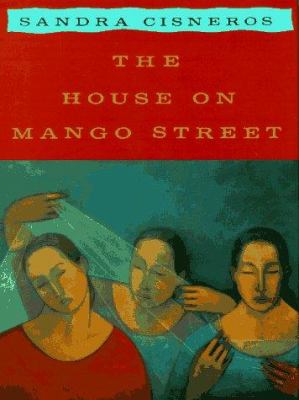
The novel opens with the narrator, a young girl named Esperanza, describing her current living situation. She says that she and her family have always moved from home to home, and each time they promise they’ll find a permanent one. The house they own now on Mango Street is an improvement, but Esperanza still feels ashamed of her Latina culture and her family’s poverty.
Although she is still a young girl, Esperanza is forced to mature quickly because the women of her culture are often abused and forced to bear children. Esperanza is acutely aware of this, along with two friends she made: Lucy and Rachel. This is shown when the girls play dress up with high heels. Also, while playing double Dutch rope, the girls rhyme about child bearing and the use of hips.
In the second half of the novel, Esperanza begins to experience some first handed sexism. Most of her female neighbors are physically trapped in their house and suffer from abusive husbands. Esperanza makes a promise to herself to never be trapped like that and this is when she begins to play on leaving Mango Street.
She makes a friend her age named Sally, a girl who tries to counter her abusive father by being very sexually mature. By now, Esperanza is in the middle of puberty. She finds herself being attracted to boys and is slightly jealous of how the boys flock to Sally. She expresses her desire to have a boyfriend when she talks fondly of a boy who watches her, names Sire. However, when she goes to the fair, she is sexually assaulted and is angry at Sally, older women, and books and magazines for lying about how the experience should be.
At the end of the novel, Esperanza talks to her neighbor Alice about how distraught she is over the fact that she has never really belonged to a home. She promises herself she will leave Mango Street one day and that she will come back and help those who can’t leave.
The novella explores toxic gender roles, the impact of a place of belonging, and coming of age.
Throughout the story, Esperanza describes women trapped in the lives they life. Most of her neighbors are young girls who, despite their age, take on motherly duties. Esperanza’s cousin, Marin, relies on finding a husband to pull her out of poverty and improve her life. This is one of the most prominent themes in the novel- women of Esperanza’s culture are patronized and deemed useless. If a girl wants to escape the life she is living, she has to find a man to help her out.
Esperanza expresses multiple times towards the end of the novella how she feels like she has never had a home. All of her houses have only left her feeling ashamed and empty. This shows that having a secure home and a place to belong to is essential to growing up healthy and happy. Having a place in which you can grow and rely on is essential throughout adolescence years. Because Esperanza didn’t have the comfort and a home, she grew up slightly messed up.
Unlike most novels that discuss adolescence, Esperanza’s story is depressing. Instead of growing up believing puberty is a period of discovery and new knowledge, Esperanza is forced into puberty and as a result hates it. For Esperanza, as soon as women are no longer kids, they are forced into a life of motherly duties. As a result, Esperanza fears the unwanted responsibilities that come with adolescence since she has seen how much it has negatively impacted the women around her.
I love this book. The perspective and the simple language really get you inside the narrators head and you feel deeply immersed in the plot line. The only downside is that some vignettes are slightly vague and leave you puzzled.
Check out The House on Mango Street at the Newport Beach Public Library.
